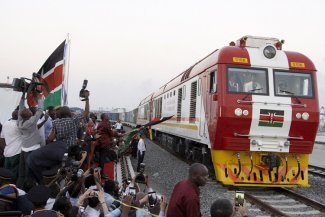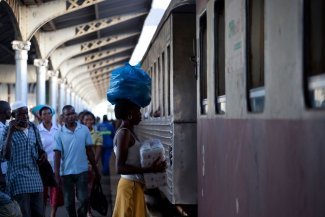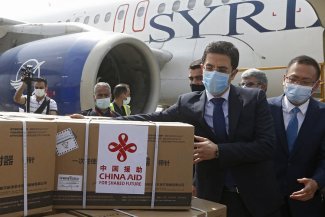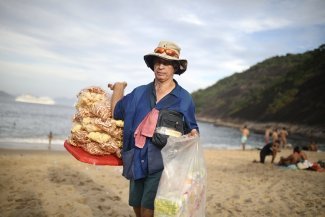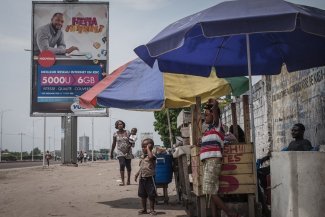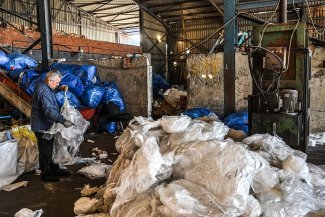College students take selfies at the Nam Ou River Cascade Hydropower Project, developed by the Power Construction Corporation of China (PowerChina), in Luang Prabang, Laos, on 13 July 2022. Laos is the country with the highest level of debt-exposure to China in the world and is currently on the brink of debt default.
Debt has been identified as an excuse for human slavery since the days of early Mesopotamia up until the present. Debt has also justified coercion in relations between states. The Hague Conventions of 1899 and 1907 on ‘Restricting the Use of Force to Recover on Contract Claims’ were the first international efforts to restrict this practice, that was still common as recently as the early 20th century.
For the past 200 years, it has become common to see debt-related mechanics and loss of sovereignty described as a ‘debt-trap’. In modern times, this perception was not diminished by the creation of international institutions such as the International Monetary Fund or circumstantial creditor arrangements for debt alleviation. On the contrary, developing world institutions such as the Economic Commission for Latin America perceived these arrangements as a concertation of debt owners’ interests over those of debtors.
While the most important tendency is to hold creditors responsible for the debt-trap, some see it primarily as a consequence of debtor irresponsibility. The main contemporary novelty in the ‘debt-trap’ discussion is that it is now focused on China. In fact, the issue dominated the most recent G7 annual summit, with G7 leaders pledging US$600 billion worth of global infrastructure investment as a more “sustainable” alternative to China’s Belt and Road Initiative (BRI).
The Chinese press hit back with articles such as China’s ’debt-trap’ rhetoric is clumsy lies fabricated by the US and US should be held responsible for creating ‘debt-trap’Even before the G7 summit, we could read titles such as Rumors behind ‘China debt-trap’: How Western and Indian conspiracists smear China-Sri Lanka cooperation in the Global Times, a point of view broadly shared by some in the US – as evidenced by The Atlantic’s 2021 article, The Chinese ‘Debt-Trap is a Myth.
Facts on the BRI and debt
In September 2021, AidData carried out the most comprehensive analysis of data related to the issue in Banking on the Belt and Road: Insights from a new global dataset of 13,427 Chinese development projects. This research allows us to understand that: (1) the Chinese state has become the most important source of foreign investment at the global level, with China outspending the US and other major powers on a 2-to-1 basis; (2) there is a lack of transparency regarding key elements of this investment; (3) significantly, Chinese state investment made on concessional terms (Official Development Assistance, ODA, following OECD criteria) represents only a small and diminishing fraction of the total, with near-market rates applied to the rest; (4) the investment has a special strong corruption risk; (5) in several cases it leads to unsustainable debt situations that are normally described as ‘debt-traps’.
When “these operations are contracted by state-owned enterprises, state-owned banks, or state-owned special purpose vehicles/joint ventures without explicit host government guarantees,” AidData classifies these debts as “hidden” because they are rarely disclosed as potential host government repayment obligations but may benefit from implicit forms of government liability protection.
The lack of transparency is a key factor in creating a ‘debt-trap’, as it prevents national or international actors from properly controlling the debt in relation to the reality of a country. Laos, which stands at the top of the Chinese ‘debt-trap’ league, also ranks highest on the ratio of hidden-debt to GDP.
Corruption is another important element of this debate. The abstract of the study underlines that: “China has rapidly scaled up the provision of foreign currency-denominated loans to resource-rich countries that suffer from high levels of corruption.” Among the various factors that led the AidData research team to this conclusion, we can quote the following: “According to Table 4, 89 per cent of official sector lending from China between 2000 and 2017 supported countries that scored below the global median on the WGI [Worldwide Governance Indicators] Control of Corruption Index.”
The AidData report analyses in greater detail the case of two of the world’s most highly indebted countries, Laos and the Republic of Congo (Congo-Brazzaville). In both cases, there are high levels of debt and hidden-debt resulting mostly from the financing of big infrastructural projects on non-concessional terms and low levels of governance as can be understood looking at the WGI world table. As a result, both countries attained an unsustainable level of debt. The Republic of Congo restructured its debt in 2019 with its main Chinese creditor, Eximbank, by delaying yet increasing its debt burden, while Laos had to concede to China the control of “a large part of the country’s electricity transmission grid […] in an apparent debt-for-equity swap”.
The Sri Lankan situation
The link between Sri Lanka’s recent economic crisis and the impact of Chinese debt-trap diplomacy has been highlighted by numerous observers. Still, it is important to stress that, like its historical predecessors, the Chinese debt-trap under analysis is a result of a bilateral relation – with responsibilities from both sides of the debt relation.
As has often happened in the past, crisis due to debt-trap relations normally becomes apparent in difficult economic times. The present crisis is no exception, but this does not allow us to disavow the unsustainability of debt as a problem on its own.
According to the IMF’s 2022 Sri Lanka country report, at the end of 2020, Sri Lanka’s bilateral debt to China was over 50 per cent of all state bilateral debt; a figure considerably above the 10 per cent of global debt normally invoked by those who dismiss the idea of a Chinese debt-trap. Crucially, it is more important to analyse the sustainability of the investment originating such debt – as US-based China expert Jonathan Hillman did in his book The Secret History of Hambantota – than to blur facts by drowning them in statistics.
The claims made by Xinhua, Global Times, and The Atlantic dismissing the existence of a Chinese debt-trap in Sri Lanka – or explaining the concept as either a product of American and Indian conspiracy theorists or as a plain myth – cannot be accepted.
One of the most striking pieces of analysis on the Chinese debt-trap begins with this telling paragraph: “American statesman John Adams, who served as president from 1797 to 1801, famously said: ‘There are two ways to conquer and enslave a country: one is by the sword; the other is by debt.’ China, choosing the second path, has embraced colonial-era practices and rapidly emerged as the world’s biggest official creditor.”
This idea – of a China that tries to conquer and enslave – could be an exaggeration for the reasons stated (i.e., that borrowing is a common and bidirectional practice). Besides, the sword and debt are not mutually exclusive – and China’s expansionist agenda across the Himalayas, on the South China Sea, or the Taiwan Strait are stark reminders of this fact.
This method of contextualising China’s debt-trap diplomacy in history seems sound, and one could look differently at the importance of it by observing that Western countries did not act in an essentially different way in the past. Still, Western countries have largely overcome some of the most dogmatic capitalist logics – which still survive in Chinese policy.
The problem, as pointed out by AidData, is that the tendency in the Chinese international investment strategy does not seem to point to the right direction.
Notwithstanding, President Xi Jinping publicly made some important statements on the need to reform the BRI, most in particular, regarding its environmental impact. Is it possible to envisage a reform-minded, progressive leader for China?
The fully-fledged imperial character of the present Chinese policy we now witness does not leave much room for reforming ambitions. A global effort of assistance to development – countering the debt-trap logic – is a necessity and should be raised to the fore by the international community.




